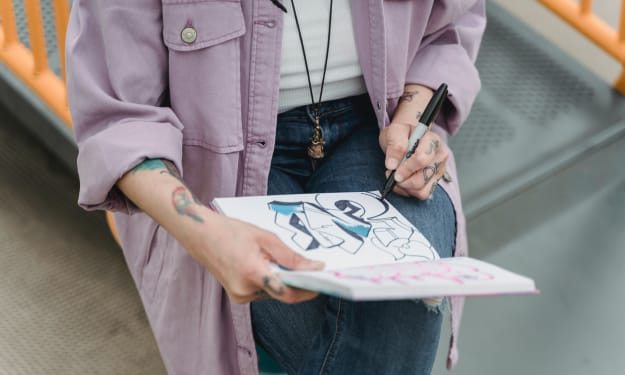Cultural Appropriation in Art: Navigating Boundaries and Ethics
Cultural Appropriation in Art: Navigating Boundaries and Ethics

Cultural Appropriation in Art: Navigating Boundaries and Ethics
Art has always been a powerful medium for self-expression, cultural exploration, and social commentary. Artists draw inspiration from various sources, including their own heritage and the rich tapestry of cultures that surround them. However, there is a fine line between appreciating and appropriating another culture's artistic traditions. Cultural appropriation in art raises important questions about the boundaries of artistic expression, the ethics of borrowing, and the impact it has on marginalized communities. In this article, we will delve into the complex and nuanced nature of cultural appropriation in art, examining its implications and suggesting ways to navigate this delicate terrain.
Cultural appropriation can be defined as the adoption or borrowing of elements from a culture by members of another culture, often without understanding or respecting the historical, social, and cultural significance behind those elements. In the context of art, this can manifest in various forms, such as incorporating traditional motifs, symbols, or techniques from another culture without proper attribution or understanding of their context.
One of the central criticisms of cultural appropriation is the power dynamic at play. Oftentimes, the cultures being appropriated are those of historically marginalized communities, whose traditions have been suppressed or denigrated by dominant cultures. When artists from the dominant culture appropriate elements from these marginalized cultures, it can perpetuate harmful stereotypes, commodify cultural practices, and reinforce power imbalances.
An important aspect of cultural appropriation is the issue of misrepresentation. When elements of a culture are borrowed without proper understanding or respect, they can be distorted or stripped of their original meaning. This can lead to the erasure of the cultural context and contribute to a shallow, superficial understanding of the culture being appropriated. The result is a diluted representation that fails to capture the essence and depth of the original cultural expression.
Furthermore, cultural appropriation in art can have economic consequences. When elements of a culture are taken and commodified without fair compensation or recognition, it can exploit the creative labor of marginalized communities. This economic imbalance further exacerbates existing inequalities and prevents artists from those cultures from benefiting from the commercial success that may arise from their cultural heritage.
However, navigating the boundaries of cultural appropriation in art is not a straightforward task. It requires a nuanced understanding of the complexities involved and an empathetic approach towards cultural exchange. Artists should strive to engage in respectful dialogue, research, and collaboration with members of the culture they are drawing inspiration from.
One crucial aspect of addressing cultural appropriation is acknowledging the historical context and power dynamics at play. Artists should educate themselves about the cultural significance of the elements they are incorporating into their work and ensure that they are not perpetuating harmful stereotypes or exploiting marginalized communities. They should strive for authentic representation and seek to elevate the voices and perspectives of the cultures they draw inspiration from.
Collaboration and consultation with artists and cultural practitioners from the culture being referenced is another important approach. Engaging in respectful dialogue and seeking permission or guidance can help ensure that the artistic interpretation is accurate and sensitive to the cultural context. This can also create opportunities for cross-cultural exchange and understanding.
Appropriation becomes problematic when it crosses the line into cultural exploitation. Artists should be mindful of the potential harm their work may cause and be open to criticism and feedback. It is essential to listen to the perspectives of those from the culture being appropriated and be willing to adapt and modify their approach accordingly.
Furthermore, proper attribution and recognition of the cultural sources is crucial. Artists should acknowledge the origins of the elements they are incorporating and give credit to the cultures that have inspired their work. This can help provide visibility and appreciation for the marginalized communities whose traditions are being borrowed.
Institutional frameworks and policies can also play a significant role in addressing cultural appropriation in art. Art institutions, museums, and galleries should promote diversity and inclusivity by actively seeking out and exhibiting the





Comments
There are no comments for this story
Be the first to respond and start the conversation.